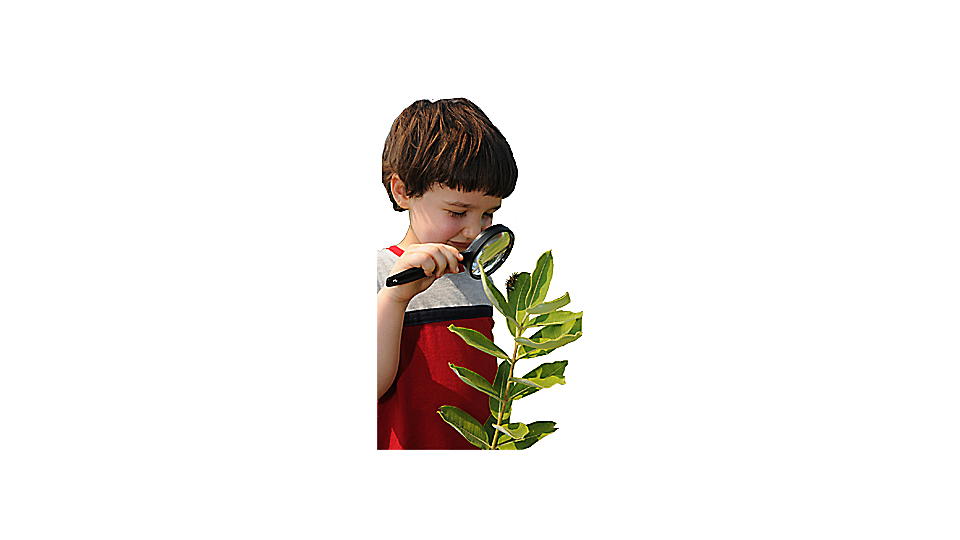Article: How Does Your Garden Grow?

Looking for a healthy, inexpensive, educational and fun way to get the family outdoors? Try a spring garden!
Ahhh, springtime! The year’s sweetest season brings with it an innate urge to get outside and convene with nature. It also brings with it a plethora of learning opportunities—this is the time of year for buds, baby animals, busy insects and many other interesting, observable natural phenomenon. One of the best ways to encourage a love of nature, as well as science, in your children is through home gardening—an activity that has the added bonus of physical exercise, as well as being something the whole family can participate in together. Gardening is also something that children can enjoy throughout adulthood as a relaxing, lifelong way to get outdoors and relax.
If you’ve never planted a garden before, take some time to get acquainted with gardening basics. Spring is a good time to start planting a garden, but you can start planning your strategy while it’s still cold and snowy outside. This is a great time to get your children involved: Start talking about what kind of garden you’d like to grow (Flowers? Vegetables?). Do research on the plants you are interested in.
If your children are interested in flowering plants, flip through a gardening magazine or book on flowers together. Use this time to explain the terms “perennial” and “annual,” and discover what kind of care each flower requires. The annuals are pretty and bloom brightly, but they need to be planted every year, for example. Ask your kids how they feel about that. Would they rather have a less labor-intensive flower? Or are they set on that particular blossom?
If the kids like the idea of vegetables, talk about what kind they’d like to plant and why. Do they want tomatoes so they can make spaghetti sauce? Would they like to grow their own Halloween pumpkins or gourds? Do they love eating sunflower seeds—or would they like to watch the birds in the garden that these plants would attract?
After doing some brainstorming, scout out a place for your garden in the back yard. (If you live in a city, you can research plants for a window box, or grow flowers in a pot.) Remember that most plants will need several hours of full sunshine daily, but if you only have shady areas in your yard, you may be able to work around that by choosing plants that appreciate a little shade. Now is a good time to take your children on a field trip to your local nursery or garden center. Write down what plants you are interested in, and take the list along on the trip. Have the kids ask the gardener at the center if the plants are suitable for their type of plot. If not, ask for alternatives—and what do they look like? What special care do they need? Enjoy some time walking around the nursery looking at the different plants.
You can also call the garden center ahead of time to see if they can suggest some easy-care plants suitable for children to grow. Sunflowers and lettuce are two ideas for seed-based plants that tend to do well with a simple sowing. Read the directions on the seed packet with your children, and follow directions carefully.
One thing to note: Although children usually appreciate the “miracle” of seeing seeds grow to fruition, some kids may become a bit impatient with the process and lose interest. You may want to consider buying set plants at the nursery (the small baby plants in flat trays) and starting from that point. Set plants are fun and easy to work with. Simply dig a hole, drop the plant in and water well. Encourage your children to monitor the little plants’ growth.
Remember that both seedlings and set plants require a lot of water in the beginning stages. Here again is a great opportunity to get your kids involved, as well as to give them a lesson about photosynthesis! Explain that the plants/seeds need water to make their own food, and that not watering the plants is equivalent to not feeding the family pet (or yourself). What would happen to Spot if he didn’t get his dog food? He’d get sick, just like the plants will if they aren’t watered. Make watering the garden a family chore—but make it fun. Try to slant it as caring for something, not a duty to be done.
It’s best for you to handle such steps as fertilizer, mulch, etc. yourself—but you may certainly explain to your children what these are and why they are important. Fertilizer can be compared to multivitamins. But make sure to tell your kids it’s poisonous to humans!
While the garden flourishes, make sure to observe what insects and birds visit. If you see a particularly beautiful specimen, look it up on the Internet or at the library and try to find out what is attracting it. Have your children keep a log of the various visitors to your garden. If potentially unfriendly insects come, such as bees, explain how to treat these with respect so they don’t sting.
When your garden comes into bloom or harvest, the final step in getting your children involved is probably the most fun of all! Have them pick the fruits or blossoms of their labor. If they’ve chosen flowers, put them in a vase to decorate the table, or create a bouquet for Grandma or a friend. If they’ve sprouted veggies, find ways to incorporate them into your daily meals, or put them in a basket to give as a gift. Invite your children’s friends over to share the bounty. And when winter comes, don’t be surprised if your kids are ready to plant a whole new plot!








